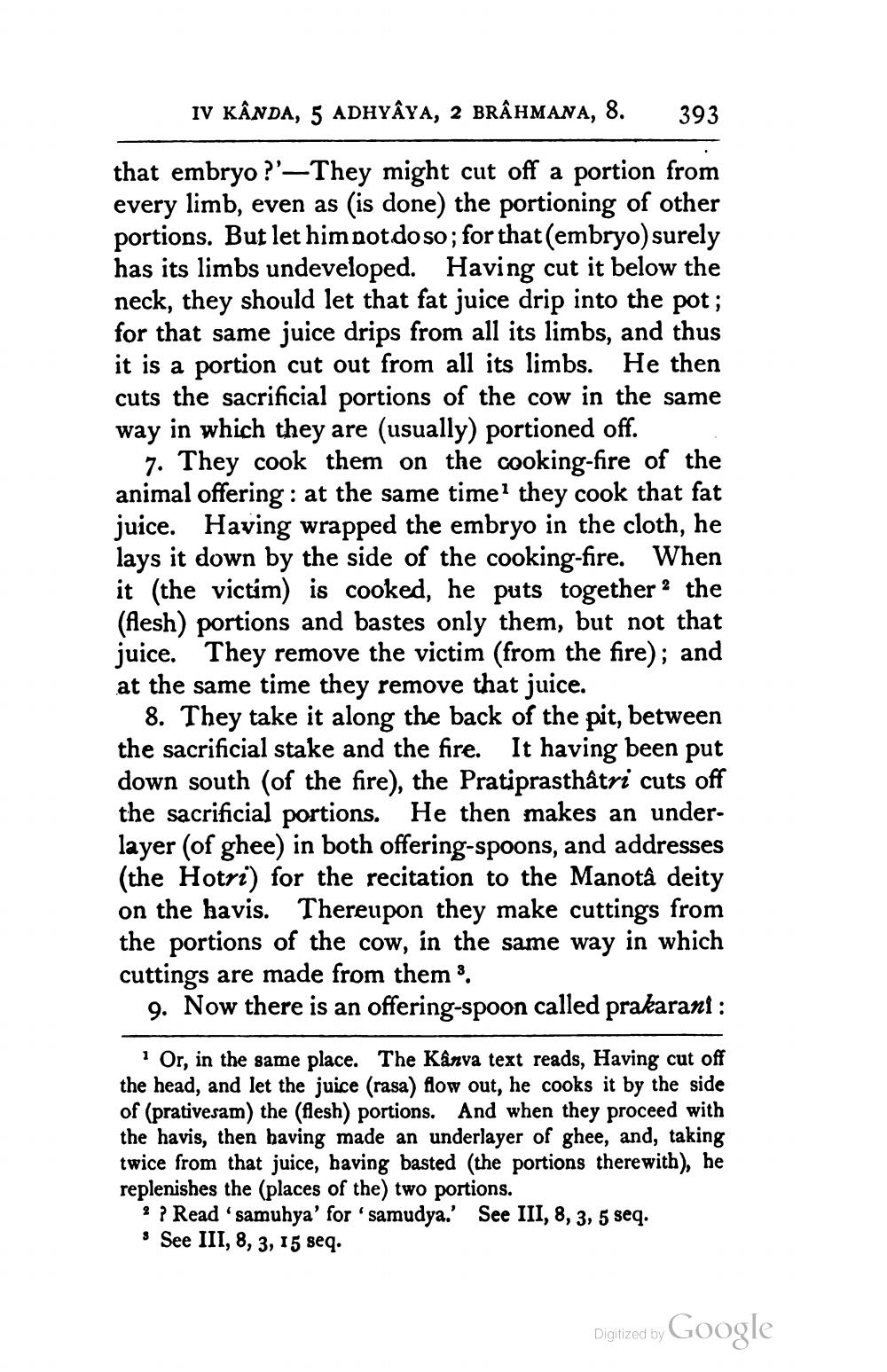________________
IV KÂNDA, 5 ADHYAYA, 2 BRÂHMANA, 8.
393
that embryo ?'—They might cut off a portion from every limb, even as (is done) the portioning of other portions. But let him notdoso; for that (embryo) surely has its limbs undeveloped. Having cut it below the neck, they should let that fat juice drip into the pot; for that same juice drips from all its limbs, and thus it is a portion cut out from all its limbs. He then cuts the sacrificial portions of the cow in the same way in which they are (usually) portioned off.
7. They cook them on the cooking-fire of the animal offering : at the same time they cook that fat juice. Having wrapped the embryo in the cloth, he lays it down by the side of the cooking-fire. When it (the victim) is cooked, he puts together 2 the (flesh) portions and bastes only them, but not that juice. They remove the victim (from the fire); and at the same time they remove that juice.
8. They take it along the back of the pit, between the sacrificial stake and the fire. It having been put down south (of the fire), the Pratiprasthầtri cuts off the sacrificial portions. He then makes an underlayer (of ghee) in both offering-spoons, and addresses (the Hotri) for the recitation to the Manotâ deity on the havis. Thereupon they make cuttings from the portions of the cow, in the same way in which cuttings are made from them.
9. Now there is an offering-spoon called prakarani :
? Or, in the same place. The Kanva text reads, Having cut off the head, and let the juice (rasa) flow out, he cooks it by the side of (prativesam) the (filesh) portions. And when they proceed with the havis, then having made an underlayer of ghee, and, taking twice from that juice, having basted (the portions therewith), he replenishes the (places of the) two portions.
? ? Read 'samuhya' for 'samudya.' See III, 8, 3, 5 seq. s See III, 8, 3, 15 seq.
Digitized by Google




